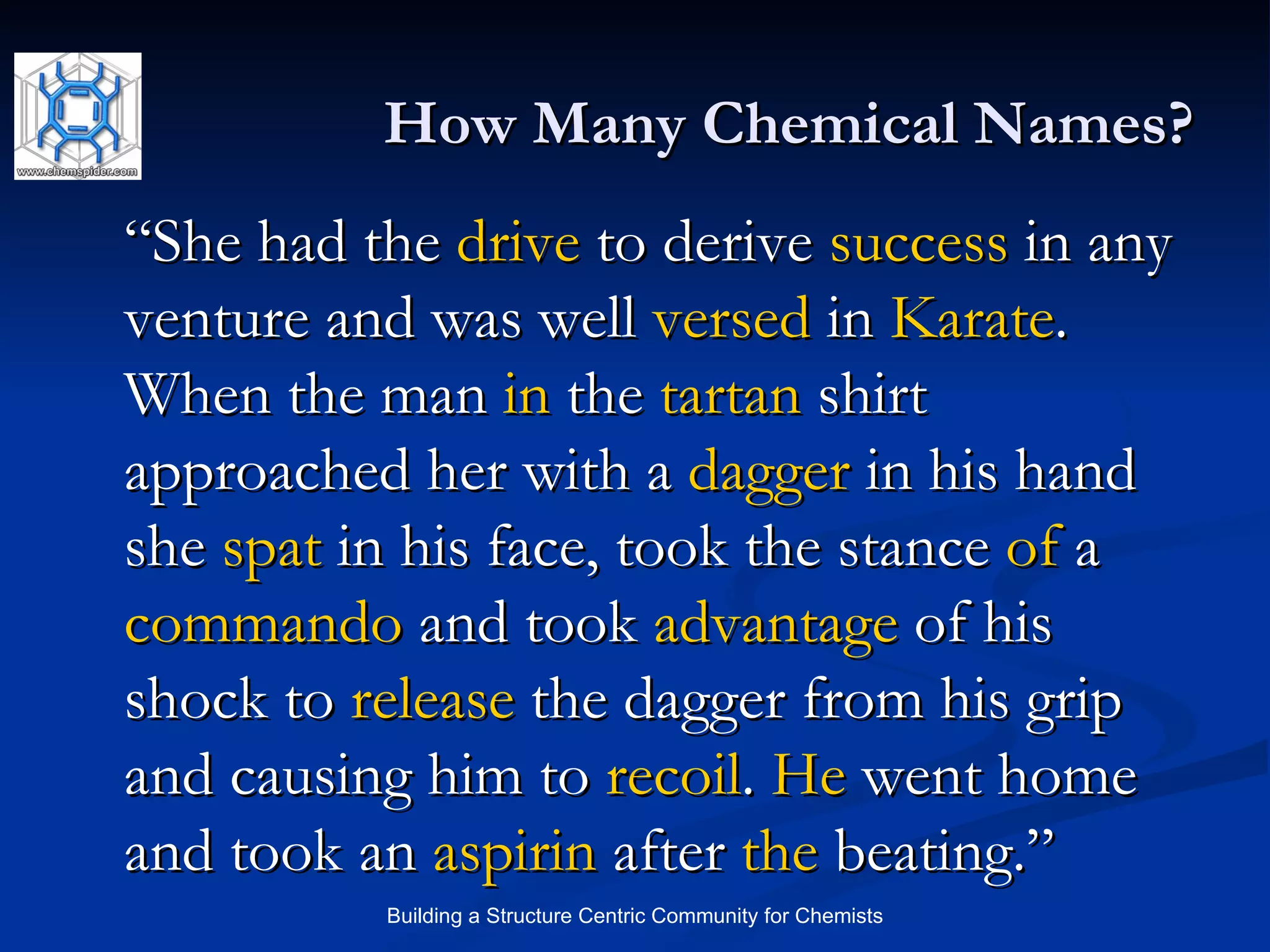The document discusses using crowdsourcing and text mining to improve access to chemistry information on the internet. It describes ChemSpider, a search engine for chemical structures, properties, and information. ChemSpider aims to index chemistry articles and literature to make chemical information more accessible and searchable by structure. The challenges of aggregating and curating large amounts of chemical data from various sources are also discussed.








































![Name Recognition Azo aldehyde 2 was synthesized according to a reported method [17]. To a stirred solution of azo aldehyde 2 (1.08 g, 3.76 mmol ) in dry CH2Cl2 (30.00 mL) at 0 oC were successively added (3,4-diaminophenyl)phenyl methanone 1 (0.40 g, 1.88 mmol) and a excces of anhydrous MgSO4 (2.00 g,16.67 mmol) . The resulting mixture was stirred for 6 hours at room temperature [18]. The mixture was filtered and washed with dichloromethane . Then the solvent was evaporated under reduced pressure to give azo Schiff base 3 as a red solid which was recrystalized from ethanol 95% (1.28 g, 91 %)](https://image.slidesharecdn.com/a-presentation-at-nature-publishing-group-crowdsourcing-collaborations-and-textmining-in-a-world-of-open-chemistry-1227524027683083-9/75/A-Presentation-At-Nature-Publishing-Group-Crowdsourcing-Collaborations-And-Text-Mining-In-A-World-Of-Open-Chemistry-41-2048.jpg)
![Name Recognition Azo aldehyde 2 was synthesized according to a reported method [17]. To a stirred solution of azo aldehyde 2 (1.08 g, 3.76 mmol ) in dry CH2Cl2 (30.00 mL) at 0 oC were successively added (3,4-diaminophenyl)phenyl methanone 1 (0.40 g, 1.88 mmol) and a excess of anhydrous MgSO 4 (2.00 g,16.67 mmol) . The resulting mixture was stirred for 6 hours at room temperature [18]. The mixture was filtered and washed with dichloromethane . Then the solvent was evaporated under reduced pressure to give azo Schiff base 3 as a red solid which was recrystalized from ethanol 95% (1.28 g, 91 %)](https://image.slidesharecdn.com/a-presentation-at-nature-publishing-group-crowdsourcing-collaborations-and-textmining-in-a-world-of-open-chemistry-1227524027683083-9/75/A-Presentation-At-Nature-Publishing-Group-Crowdsourcing-Collaborations-And-Text-Mining-In-A-World-Of-Open-Chemistry-42-2048.jpg)








































